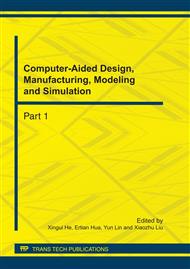p.481
p.486
p.491
p.497
p.503
p.509
p.515
p.524
p.531
Harm and Trapping Strategy Research on Tiny Dusts PM2.5
Abstract:
The fine dust PM2.5 can suspend in the air for a long period, penetrate human body's defense system, and deposit directly into the alveoli, where does harm to health. Because of the serious pollution and the trapping difficulty of ordinary dust removal technologies, PM2.5 has become the focus of international air pollution control. To effectively capture PM2.5, detailed analysis of the creation of PM2.5 have been done, and different trapping strategies specific to different creation sources have been posed in this paper. Low collection efficiency of PM2.5 can be expected to be solved by the electrostatic precipitator, which applies the charging and coagulation for fine dust, penetrating-type electric field, high frequency DC power supply, combined with reduced voltage optimization of the rapping mode, etc.
Info:
Periodical:
Pages:
503-508
Citation:
Online since:
August 2011
Authors:
Price:
Сopyright:
© 2011 Trans Tech Publications Ltd. All Rights Reserved
Share:
Citation:


